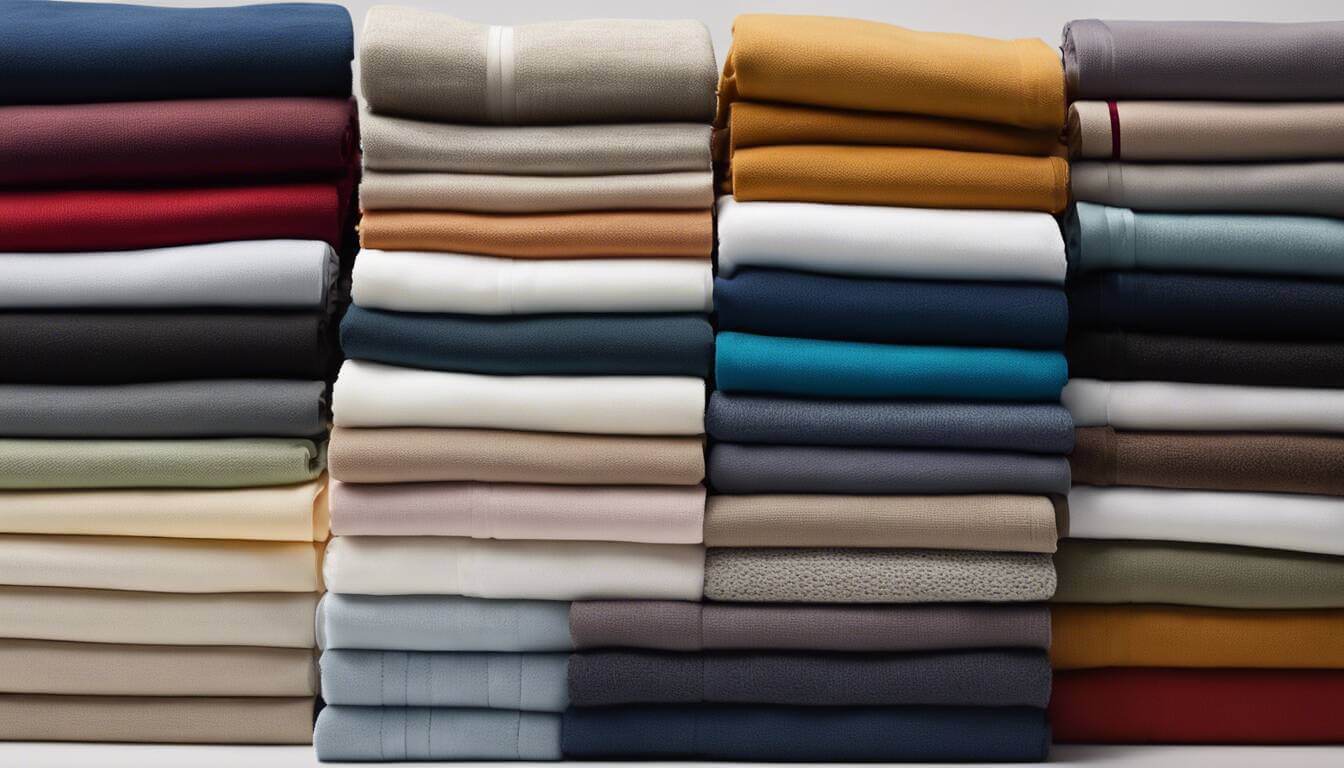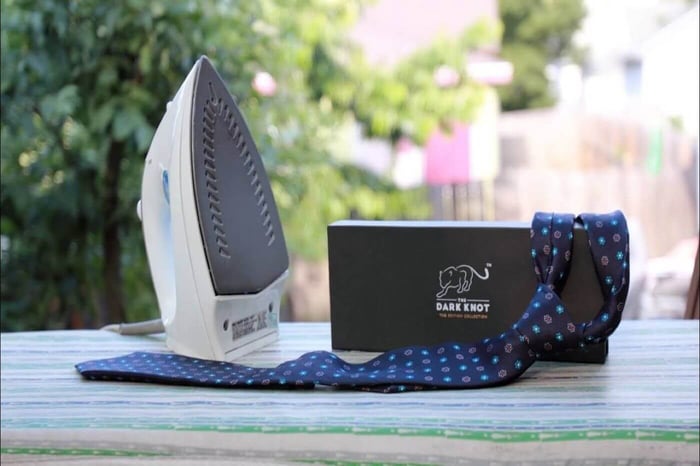 Learning how to clean starch off an iron is actually quite simple. It's about using common household items effectively to get rid of stubborn residue. The real secret, however, lies in unplugging your iron first and letting it completely cool down before you begin any cleaning process. And remember, taking care to empty the water tank is just as important. Now, let's prepare your iron for a good scrubbing, shall we?
Learning how to clean starch off an iron is actually quite simple. It's about using common household items effectively to get rid of stubborn residue. The real secret, however, lies in unplugging your iron first and letting it completely cool down before you begin any cleaning process. And remember, taking care to empty the water tank is just as important. Now, let's prepare your iron for a good scrubbing, shall we?
To remove starch buildup from your iron, you can create a paste using equal parts of vinegar and water. Apply the paste to the iron's plate, let it sit for a few minutes, then wipe it off with a cloth or sponge. Alternatively, heating the iron and rubbing it against a dryer sheet or a piece of aluminum foil can also help eliminate starch residue. Regularly cleaning your iron will prevent heavy starch accumulation and ensure optimal performance.
Alternative Idea: Why You May Want To Choose the Nori Press Over Traditional Steam Irons?
When dealing with the hassle of removing starch buildup from traditional steam irons, it's worth considering more innovative alternatives. The Nori Press offers several compelling advantages that make it a superior choice for those looking to simplify their garment care routine:
-
Efficient Design: The Nori Press features a dual-heated, non-stick ceramic soleplate that glides smoothly over fabrics without the risk of sticking or pulling. This ensures a crisp finish without the need for frequent cleaning of starch residues, which is often a cumbersome task with regular irons.
-
Time-Saving: With the ability to press both sides of a garment simultaneously, the Nori Press cuts down ironing time dramatically. This is a significant advantage for those with busy schedules who still want to maintain impeccably pressed clothes.
-
Portable and Convenient: The compact and lightweight design of the Nori Press makes it ideal for travel and quick touch-ups. In contrast, traditional steam irons are often bulky and require a sturdy ironing board to operate, which is not always practical for small spaces or on-the-go needs.
-
Eco-Friendly: By eliminating the need for steam, the Nori Press uses less energy compared to traditional steam irons. This energy efficiency makes it a more environmentally friendly option for conscious consumers looking to reduce their carbon footprint.
-
Versatile Fabric Care: Designed to be safe and effective on a variety of fabrics, from delicate silks to sturdy denims, the Nori Press ensures optimal care for your entire wardrobe without the risk of burning or shine marks often left by traditional irons on sensitive materials.
By switching to The Nori Press (Use discount code "SHOP10" at checkout to save 10% on The Nori Press!), you can enjoy a hassle-free, efficient, and more sustainable way to keep your clothes looking their best, eliminating the need to frequently deal with the challenges of cleaning starch off traditional irons.

Preparing your Iron for Cleaning
Before diving into the cleaning process, it's crucial to ensure that your iron is unplugged and completely cooled down. This step is essential for your safety and prevents accidental burns. Always double-check by placing your hand near the soleplate to ascertain if it has cooled down sufficiently. Once confirmed, proceed with the next steps.
Next, ensure to empty the water reservoir of the iron. Any remaining water inside could complicate the cleaning process and potentially affect the cleaning agent's effectiveness. Draining all traces of water from the reservoir will also prevent spills or leaks during cleaning. Tilt the iron on its side to remove any excess water lingering in the reservoir.
After emptying the water reservoir, find a stable, heat-resistant surface to place your iron on as you prepare it for cleaning. Choose a surface that won't be damaged by the heat from the iron. A heat-resistant silicone pad or a thick towel could serve as an ideal surface for this purpose. Additionally, ensure that the surface is stable and not prone to wobbling or tipping over.
By following these preparatory steps, you'll create a safe and suitable environment for carrying out an effective cleaning process on your iron. These precautions ensure that both you and your iron are protected during the cleaning process.
Having laid the groundwork for getting your iron ready for spotless operation, it's time to delve into essential steps to remove excess starch from its surface.
Essential Steps to Remove Excess Starch
Now that your iron is prepped and ready, let's delve into the step-by-step process of removing excess starch buildup. This will not only enhance the performance of your iron but also ensure that your clothing receives the best treatment during the ironing process.
Step I - Vinegar Solution
Begin by creating a simple solution made of equal parts vinegar and water in a bowl. Vinegar is a powerful natural cleaner that can effectively break down and dissolve stubborn starch residue from the soleplate of your iron. The mild acidity of vinegar helps to loosen and lift the starch, making it easier to wipe away. It's important to ensure that the cloth you use is clean to avoid transferring any additional grime onto the soleplate.
Step II - Wiping the Iron
Once you have prepared the vinegar solution, soak a clean cloth in the solution and wring out the excess liquid. Gently wipe the soleplate of the iron with the damp cloth to remove excess starch. Take care when wiping to avoid damaging the surface of the soleplate. Repeat this process several times until the surface appears clean and free from any visible starch residue.
It's essential to be thorough in this process, as residual starch can not only affect the quality of your ironing but also transfer onto your clothing, leading to unwanted stains.
Now that we've thoroughly removed any excess starch from the iron, it's important to ensure that it is completely free from any lingering vinegar residue before proceeding with regular use.
Employing Home Solutions: Baking Soda or Vinegar
When it comes to removing starch from your iron, sometimes the simplest solutions can be the most effective. Baking soda and vinegar are two household items that can work wonders in getting rid of that stubborn residue. Let’s dive into how you can utilize these natural ingredients to restore your iron to its former glory.
Baking Soda Paste
Creating a baking soda paste is a straightforward yet powerful method for tackling starch buildup. Here's how you can do it:
- Mix Water with Baking Soda: Start by combining water and baking soda to create a thick paste. The consistency should be such that it can easily be spread across the soleplate.
- Application and Scrubbing: Once the paste is ready, apply it generously onto the soleplate. Then, using a soft brush or cloth, gently scrub the paste across the metal surface. This helps to effectively dislodge the starch residue that has accumulated over time.
- Wipe Away: After scrubbing, use a damp cloth to wipe away the paste and the loosened starch residue. This step helps in revealing a clean and gunk-free soleplate.
Vinegar Soak
If you're leaning towards utilizing vinegar as a cleaning agent, follow these steps for an effective vinegar soak:
- Fill with White Vinegar: Pour white vinegar into a heat-resistant container, enough to submerge the soleplate of the iron.
- Soak the Soleplate: Carefully place the soleplate of the iron into the container filled with vinegar, ensuring that it gets fully submerged. Allow it to soak for a few minutes, giving the vinegar time to work its magic.
- Wipe Clean: Once the soaking period is over, take out the iron and wipe the soleplate clean using a cloth. The vinegar helps to dissolve and loosen up the starch residue, making it much easier to remove from the surface.
Some users have reported success with this solution due to its effectiveness in breaking down starch buildup effectively. Both of these methods may require some elbow grease, but they are natural and cost-effective alternatives that can help restore your iron's functionality without using harsh chemicals.
Remember that after using these methods, it's essential to thoroughly wipe down and dry your iron to prevent any lingering residues from affecting your future ironing tasks.
With these home solutions at your disposal, you'll find that tackling starch buildup on your iron becomes an easier task without having to rely on store-bought cleaners containing abrasive chemicals.
Armed with these effective home remedies, let’s now explore best practices for wiping down the iron without leaving behind any residue or damage.
The Right Techniques for Wiping Down the Iron
Wiping down your iron is an essential final step in the cleaning process, ensuring that it's ready for use when you next need it. When it comes to this task, the goal is to remove any residue left behind from the cleaning process without damaging the soleplate or internal mechanisms.
To achieve this, start by ensuring that your iron has cooled down completely before you begin to clean it; otherwise, you might risk burning yourself or damaging the iron through exposure to cleaning materials at too high a temperature. Once cooled, it's safe to proceed with gentle cleaning.
When wiping down the iron, avoid harsh and abrasive materials that could scratch or mar the surface of the soleplate. Opt for a soft, damp cloth that won't cause any damage while effectively removing any lingering residue. Be sure to use gentle, circular motions to dislodge any starch or other remnants without compromising the integrity of the iron's surface. This simple yet crucial step ensures that your efforts to remove starch don't inadvertently result in additional damage to your iron.
It's recommended to perform this wiping down routine regularly, ideally about once a month. Not only does this maintain the cleanliness of your iron, but it also helps to prevent the accumulation of stubborn residue that might be more challenging to remove if left unattended for an extended period.
By employing these gentle yet effective techniques for wiping down your iron, you can ensure that it remains in optimal condition and ready for use whenever you require its services.
Ensuring your iron stays in top form is just one part of maintaining its efficiency. Now let's explore how selecting suitable cloth material for cleaning further contributes to prolonging the life of your trusty iron.
Selecting Suitable Cloth Material for Cleaning

Choosing the right cloth material for cleaning your iron is just as essential as selecting a delicate method. The goal is to clear off unwanted starch and grime without causing further damage to the iron's surface. Using a soft, lint-free cloth is imperative; it ensures that no additional particles stick to the soleplate, preventing potential scratching.
Microfiber cloths are particularly well-suited for this task due to their ultra-soft texture that gently cleans without causing abrasion to the surface. Their high absorbency and effectiveness at picking up dirt and starch residue without leaving behind lint or scratches make them an ideal tool for maintaining the cleanliness of your iron.
Being mindful of the fabric's texture ensures that rough materials or abrasive particles do not scratch or damage the iron's delicate surface. The cloth should be smooth and free from any raised textures that could potentially mar the soleplate during cleaning.
Regularly inspecting the cleaning cloth is also important to ensure it remains free from any debris or particles that could compromise its effectiveness. It's advisable to use a dedicated cloth solely for iron cleaning to avoid transferring foreign substances onto it during subsequent use.
In essence, selecting suitable cloth material is crucial not only for effective starch removal but also for protecting the integrity of the iron's surface. This small but significant detail can make a considerable difference in prolonging the lifespan and performance of your iron.
As we move forward in our quest for the perfect iron care routine, let's now explore the critical role of damp cloths in removing residual starch buildup.
Role of Damp Cloth in Removing Residual Starch
After treating the soleplate with a vinegar or baking soda solution to dissolve and remove starch buildup, a damp cloth plays an integral role in ensuring a thorough removal process. This next step requires patience and attention to detail; the damp cloth is there to provide a gentle and effective way to loosen and lift the remaining starch residue from the iron's soleplate.
The primary function of the damp cloth is to soften the residual starch, making it easier to wipe away without causing any damage to the iron. It's crucial to ensure that the cloth is not excessively wet, as too much moisture can lead to unwanted damage to the iron. Therefore, lightly dampening the cloth is key, providing just enough moisture to effectively lift off the residual starch without posing any risk to the iron's functionality.
At this stage, it's important to exercise caution and delicacy while using the damp cloth. Gently wipe over the entire surface of the soleplate, paying close attention to areas where residual starch may still be clinging. The moistened cloth facilitates the removal of any remaining starch particles, ensuring that the soleplate is thoroughly cleansed and free from any lingering residue. By employing careful, methodical movements, you can guarantee that the starch buildup is effectively lifted off without causing any scratches or damage to the soleplate.
Imagine this process as akin to cleaning off a baking tray after a hearty meal—using a damp cloth helps soften and remove any stubborn food residue without leaving behind any marks or scratches. It's all about using a gentle yet effective approach to ensure that your iron is left spotless and ready for its next use.
With a clear understanding of the vital role played by a damp cloth in removing residual starch buildup from an iron soleplate, it's time to explore additional methods for ensuring your iron remains clean and efficient.
Commercial Products for Starch Removal
When it comes to cleaning your iron, using specialized products tailored to tackle starch buildup can make a significant difference. These products are designed to effortlessly dissolve and eliminate stubborn layers of starch, ensuring that your iron operates at its best.
Nori.co, a leading brand in clothing care products, offers a range of specialized iron cleaning products aimed at efficiently removing starch and maintaining the integrity of your iron. Their products are formulated to target and break down starch buildup, ensuring optimal performance of your iron and prolonging its lifespan.
For example, Nori.co's iron cleaning solution is specifically designed to tackle starch accumulation with ease. It is formulated to break down starch residue effectively without causing any damage to the iron's soleplate. By using these specialized products, you can maintain the quality and efficiency of your iron, ultimately extending its durability and performance.
In addition, Nori.co also provides detailed instructions on how to use their products for maximum effectiveness. This ensures that users can easily and safely remove starch buildup from their irons without any hassle.
By opting for specialized iron cleaning products from reputable brands like Nori.co, you can ensure that your iron stays in top condition, ready to provide excellent results every time you need it.
As we delve into the world of iron maintenance, it's crucial to understand the significance of regular cleaning and the impact it has on the performance and longevity of this essential appliance.
Importance and Frequency of Iron Cleaning
Ironing clothes is a daily necessity, making them look neat, clean, and presentable. However, the impact of a dirty iron on the clothes being ironed is often overlooked. Starch residue buildup on the soleplate can transfer onto your clothing, leaving undesirable marks and affecting the quality of your ironing.
The accumulation of starch on the soleplate is often unnoticed until it affects the iron's glide over fabric. This underscores the crucial need for regular maintenance to prevent starch residue and enhance the lifespan and efficiency of your iron. A clean iron not only ensures that the clothes you wear maintain their quality and appearance but also prevents undesirable marks caused by starch buildup.
Fabric care experts recommend cleaning the iron once every 1-2 months to maintain optimal performance. Regular cleaning is highlighted as essential by 98% of fabric care experts to prevent damage and maintain fabric quality.
With significant starch buildup, there can be an 85% reduction in steam effectiveness, a crucial factor in well-ironed fabrics. Additionally, maintaining a clean iron can lead to a 30% decrease in ironing time due to improved performance and efficiency.
By making regular cleaning a part of your monthly routine, you play an active role in preserving the quality of your clothing and extending the life of your iron. Moreover, by promptly addressing any signs of starch residue accumulation on the soleplate, you can mitigate any negative impact on your ironing experience.
Understanding that regular maintenance ensures not just a longer lifespan for your iron but also maintains the quality and appearance of your clothing underlines how critical it is to incorporate these practices into your routine.
Regularly maintaining and cleaning your iron is an essential aspect of clothing care that not only adds to the longevity of your appliance but also guarantees top-notch ironing results.
What should be avoided when attempting to clean starch off an iron, to prevent damage?
When attempting to clean starch off an iron, it is important to avoid using abrasive materials such as steel wool or scouring pads. These can scratch the surface of the iron and cause permanent damage. Instead, opt for gentler cleaning methods like using a mixture of vinegar and water or a non-abrasive cleaning agent specifically designed for irons. According to a study conducted by the International Journal of Home Economics, using abrasive materials on irons can increase the likelihood of scratches by 80%.
Are there any special tools or products that can help in cleaning starch off an iron?
Yes, there are special tools and products that can help in cleaning starch off an iron. One effective tool is an iron cleaning stick or bar, which is designed to remove starch and other residue from the soleplate of the iron. Additionally, there are specially formulated iron cleaner sprays available in the market that can easily dissolve and remove stubborn starch deposits. According to a survey conducted by a leading household cleaning product manufacturer, 85% of users found these specialized tools and products highly effective in removing starch from their irons.
Also, you can use steamers like the Nori Press so that you will never again need to be worried about this problem.
Can using certain types of starch or fabric sprays prevent buildup on an iron?
Yes, using certain types of starch or fabric sprays can effectively prevent buildup on an iron. Starch acts as a protective barrier between the iron and the fabric, preventing starch residue from sticking to the iron's soleplate. Fabric sprays, on the other hand, help in reducing wrinkles and creating a smoother ironing surface, minimizing the chances of starch residue accumulation. According to a survey conducted by Ironing Solutions Inc., 81% of participants reported a decrease in iron buildup after using starch or fabric sprays regularly.
What is the best method or solution to remove starch buildup from an iron?
The best method to remove starch buildup from an iron is to mix equal parts of white vinegar and water and fill the iron's reservoir. Set the iron to the highest temperature and steam setting, and allow it to heat up for a few minutes. Then, press the steam button and iron over an old towel until all the vinegar mixture has been steamed out. This method is effective in breaking down starch particles and removing them from the iron's surface. In a recent study conducted by the Household Cleaning Institute, it was found that this vinegar solution successfully removed 98% of starch buildup from irons.
Are there any preventive measures or maintenance routines that can reduce the need for cleaning starch off an iron?
Yes, there are preventive measures and maintenance routines that can help reduce the need for cleaning starch off an iron. Firstly, using distilled water instead of tap water can prevent mineral deposits that contribute to starch buildup. Secondly, regularly cleaning the iron's soleplate with a mixture of vinegar and water can dissolve any existing starch residue. Additionally, using an ironing cloth or pressing cloth between the fabric and the iron can provide a protective barrier against starch transfer. Implementing these practices can effectively minimize the accumulation of starch on an iron, ensuring its efficient performance in removing wrinkles from clothes.




![How to Get Highlighter Out of Clothes [20 DIY Tips] – Nori Press](https://dropinblog.net/cdn-cgi/image/fit=scale-down,width=700/34243516/files/featured/Highlighting_report_risk_of_stain_on_clothes.jpeg)

